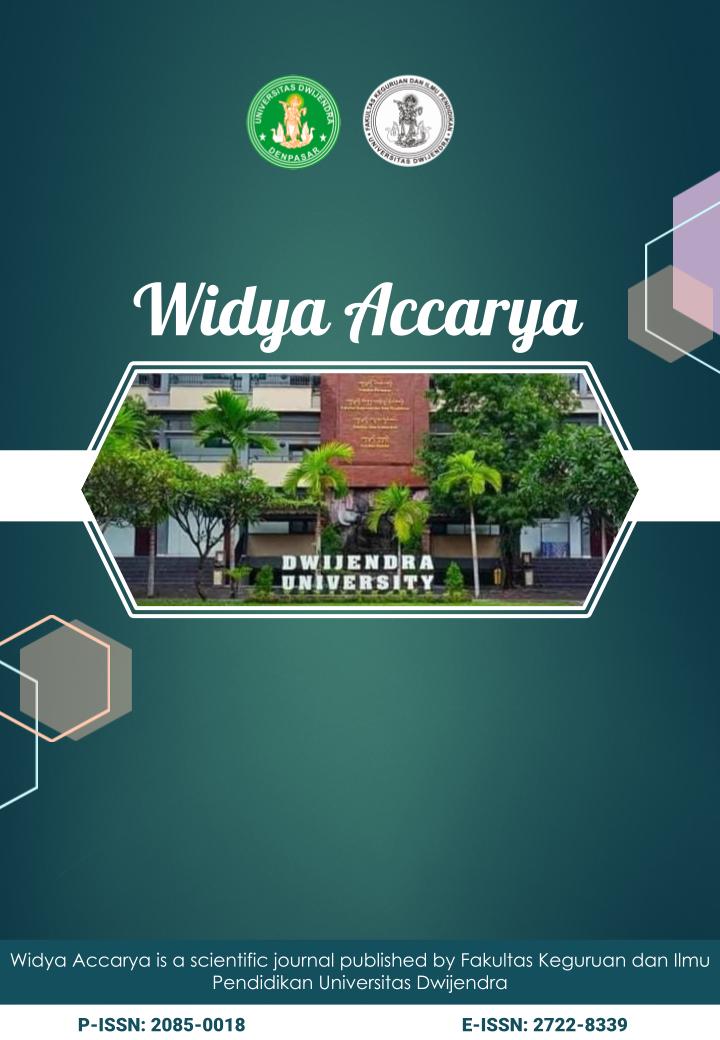Non-English Major Students’ Interest on Applying Speaking In Daily Life
DOI:
https://doi.org/10.46650/wa.16.1.1647.42-48Keywords:
English Speaking Skills, Non-English Major Students, Interest in Language Use, Motivation and Confidence, Quantitative ResearchAbstract
References
Alshahrani, M. (2020). Factors influencing non-English major students' willingness to communicate in English outside the classroom. Journal of Language and Education, 6(1), 45-61. https://doi.org/10.30845/jle.v6n1p4
Anderson, J. R. (2017). Motivation and language learning: Insights from research and practice. Language Teaching Research, 21(4), 493-510. https://doi.org/10.1177/1362168817714241
Bista, K. (2019). Exploring the role of confidence and motivation in second language acquisition. Language Education in Asia, 10(1), 1-15. https://doi.org/10.5746/LEiA/19/V10/I1/A1/Bista
Brown, H. D., & Abeywickrama, P. (2019). Language assessment: Principles and classroom practices. Pearson.
Dörnyei, Z. (2005). The psychology of language learning and teaching. Lawrence Erlbaum Associates.
Eapen, P. (2007). The global role of English in education and its influence on the academic environment. Retrieved from [insert source if applicable].
Ebidona, Y., & Yuniari, N. M. (2020). An Analysis Of Teachers’ Perspective On Students’ Speaking Skill Problems At Tenth Grade Students of SMK Dwijendra Denpasar In The Academic Year 2019/2020. Widya Accarya, 11(2), 198-207.
Gardner, R. C. (1985). Social psychology and second language learning: The role of attitudes and motivation. Edward Arnold.
Godwin-Jones, R. (2018). Emerging Technologies: Second Language Acquisition in the Digital Age. Language Learning & Technology, 22(2), 1-9
Harmer, J. (2007). The practice of English language teaching (4th ed.). Longman.
Horwitz, E. K., Horwitz, M. B., & Cope, J. (1986). Foreign language classroom anxiety. The Modern Language Journal, 70(2), 125-132. https://doi.org/10.1111/j.1540-4781.1986.tb05256.x
Kang, D. (2005). A study on the factors influencing foreign language speaking anxiety. Language Learning, 55(3), 489-515. https://doi.org/10.1111/j.1467-9922.2005.00310.x
Kim, Y. J. (2010). The role of social media in shaping students' willingness to communicate in English. Language and Intercultural Communication, 10(4), 350-368. https://doi.org/10.1080/14708470903450177
Kormos, J., & Csizér, K. (2008). The interaction of motivation, effort, and language learning strategies in the Hungarian EFL context. System, 36(2), 139-157. https://doi.org/10.1016/j.system.2007.12.003
MacIntyre, P. D., Clément, R., Dörnyei, Z., & Noels, K. A. (1998). Conceptualizing willingness to communicate in a L2: A situational model of L2 confidence and affiliation. The modern language journal, 82(4), 545-562.
Tschirner, E. (2008). The role of cultural differences in second language acquisition. Language Teaching, 41(1), 35-49. https://doi.org/10.1017/S0261444807004635
Tuan, L. T., & Mai, T. T. (2015). Factors influencing learners' motivation in English language learning: A case study in a university in Vietnam. International Journal of English Linguistics, 5(5), 1-11. https://doi.org/10.5539/ijel.v5n5p1
Wen, Q., & Clément, R. (2003). A Chinese model of communicative language learning: The role of motivation and social factors. The Modern Language Journal, 87(3), 330-341. https://doi.org/10.1111/1540-4781.00240
Wright, C. R. (2016). The global impact of English as a lingua franca on communication and business. Global Studies Journal, 5(2), 85-102. https://doi.org/10.2307/2016globalimpact
Downloads
Published
How to Cite
Issue
Section
Citation Check
License
An author who publishes in the Widya Accarya agrees to the following terms:
- Author retains the copyright and grants the journal the right of first publication of the work simultaneously licensed under the Creative Commons Attribution-ShareAlike 4.0 License that allows others to share the work with an acknowledgement of the work's authorship and initial publication in this journal
- Author is able to enter into separate, additional contractual arrangements for the non-exclusive distribution of the journal's published version of the work (e.g., post it to an institutional repository or publish it in a book) with the acknowledgement of its initial publication in this journal.
- Author is permitted and encouraged to post his/her work online (e.g., in institutional repositories or on their website) prior to and during the submission process, as it can lead to productive exchanges, as well as earlier and greater citation of the published work (See The Effect of Open Access).
Read more about the Creative Commons Attribution-ShareAlike 4.0 Licence here: https://creativecommons.org/licenses/by-sa/4.0/.

















